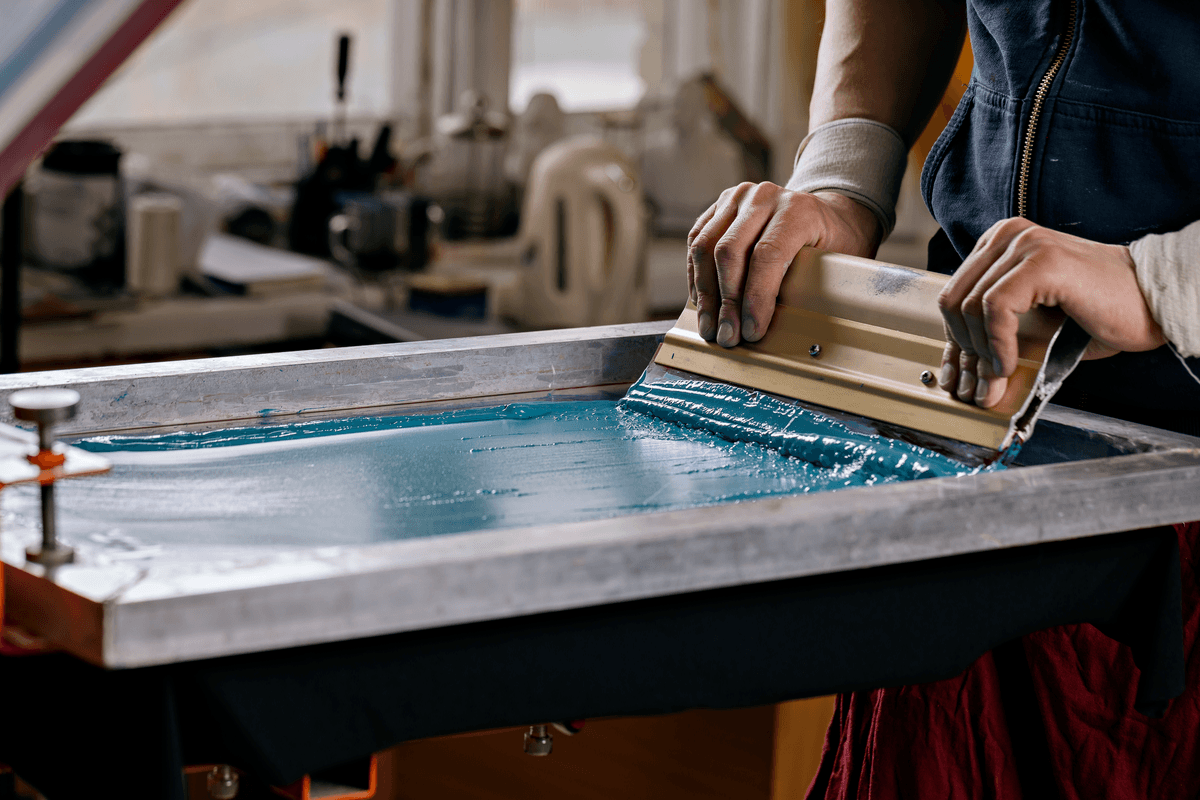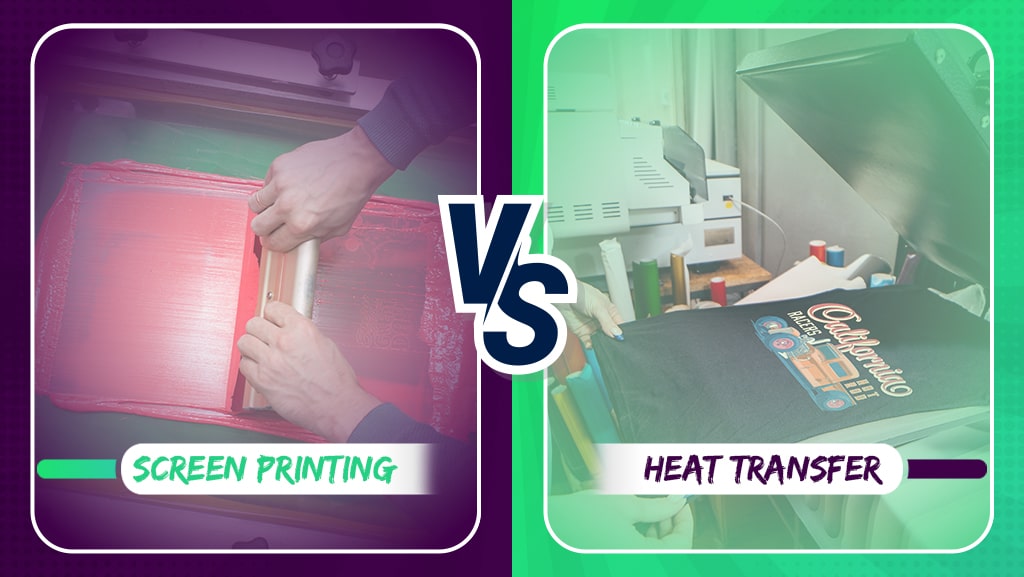The 20-Second Trick For Tx Tees
Table of ContentsThe Single Strategy To Use For Tx TeesFascination About Tx TeesThe Only Guide for Tx TeesAll about Tx TeesThe Ultimate Guide To Tx TeesNot known Details About Tx Tees The 5-Second Trick For Tx Tees
Add up various other expenses, like the number of energies it takes to run the shop and the price of ink and solution per design. Take the print listed below.The solution ought to only be a few cents given that you 'd only need to coat one screen for this work. So just how much should you charge per tee shirt to make an earnings? Generally, printers attempt to make up to 45% earnings on a print work. Here's a table to aid you figure out that: overall cost per thing percent of desired profit as a decimal (instance:.25 or.45) profit made per thing per work Now let's talk regarding the profitability of DTF.

With DTF, you can print a handful of t-shirts, or just one. Use the very same calculator as the area above to determine how much profit you would certainly make utilizing DTF transfers. Compare the costs and earnings to whichever approach speaks finest to your configuration and process. Both display printing and DTF have their specific niches on the planet.
The Buzz on Tx Tees
The very best method to recognize? Ask around and see what print shops like yours are doing. custom cap printing. Attempt both out and see which you like far better
When you're choosing what sort of printing method to utilize for publishing your art work layouts on your garments, it's important that you know the differences in between these 2 methods so you can maximize results while lessening expenses. Display printing is one of the most commonly used technique for printing layouts on fabrics.
DTG printing is additionally known as spot or straight to garment printing because it prints only what is required as opposed to making a screen as screen printers do. https://www.twitch.tv/txtees02/about. Screen printing functions by screen filler squeegee display printing ink screen mesh display, then transferring the photo to garment utilizing heat and/or stress
The DTG printer uses unique dye-sublimation inks that are applied right into a pre-designed photo by a digital printing system. The inks enter into the fabric, permitting for dynamic shades and phenomenal detail. It's also called spot or straight to garment printing since it publishes only what is required rather than making a screen as display printers do.
10 Easy Facts About Tx Tees Shown
It's much faster - you can print a fullcolor picture in mins, as opposed to hours for display printing. Second, there's no set up time or prices involved - you can print any type of style you like, without having to create a screen. Third, there's no waste - because display printers screen print one layout each time, they have to screen each shade individually.
The paper is really expensive and can only be utilized when. Once it's published on, it needs to be discarded. - The initial purchase price is less than the ahead of time financial investment of DTG printers- You can publish multi-color layouts one display at once rather of needing to publish each color individually like DTG printing.

How Tx Tees can Save You Time, Stress, and Money.
Nevertheless, rather than utilizing screen mesh as screen printers do, color sublimation printers use laser innovation to move your images onto garments or paper. A heat process moves the color from its solid-state directly right into the gas stage which in turn fuses it onto textile substrates when they are swiftly heated to high temperature levels under high stress.
Sublimation printing is green. It makes use of much less water than screenprinting, and since it does not involve the use of dangerous solvents, it's secure for all types of clothing. The color sublimation inks are additionally unsmelling when cured, unlike display printers that use damaging chemicals throughout the display printing procedure that leave an unpleasant odor.
They also save money on costly devices like exposure systems considering that color sublimation printers do not require a UV exposure unit or a flash cure stove that is usually used in screen printing (custom cap printing). What is direct to garment printing (DTG Printing)? DTG printing is a digital screenprinting procedure that publishes directly onto fabric using specialized inkjet printers
Some Known Incorrect Statements About Tx Tees
DTG printing provides many advantages over traditional screenprinting, including the ability to publish photographic quality photos, higher shade vibrancy, and the capability to publish styles on darker textiles. DTG printers function by heating the fabric ink till it becomes a gas. The gas then penetrates the material, bonding with the fibers to create an irreversible print.

Screen printers simply prepare their display after that start printing until they lack product or ink.- There is a variety of seasoned display printers around the world, which can be useful for beginners. - It's a slower process - display printers often need to wait for the ink to dry prior to they can publish the next color- Display printers require hand-operated labor, so there's a greater discovering curve and it takes longer to produce a top quality style- Display printing isn't as precise as DTG printing, so you may get some "bleeding" of shades from one component of the image onto another otherwise done properly.
6 Simple Techniques For Tx Tees
Rather of making use of screen mesh as display printers do, color sublimation printers utilize laser modern technology to transfer your pictures onto garments or paper. A warmth process moves the color from its solid-state directly into the gas stage which in turn merges it onto textile substrates when they are quickly heated to heats under high pressure.
Sublimation printing is green. It uses less water than screenprinting, and due to the fact that it does not involve using harmful solvents, it's risk-free for all sorts of clothing. The color sublimation inks are also odor-free when healed, unlike screen printers that use hazardous chemicals throughout the display printing procedure that leave behind an unpleasant odor.
They additionally save money on expensive tools like direct exposure units since color sublimation printers do not call for a UV direct exposure unit or a flash cure oven that is normally made use of in display printing. What is direct to garment printing (DTG Printing)? DTG printing is an electronic screenprinting process that prints directly onto fabric utilizing specialized inkjet printers.
The Best Strategy To Use For Tx Tees
DTG printing provides numerous benefits over traditional screenprinting, consisting of the capacity to publish photo high quality pictures, greater color vibrancy, and the capability to publish designs on darker fabrics. DTG printers function by heating up the textile ink until it develops into a gas. The gas after that permeates the fabric, bonding with the fibers to develop an irreversible print.